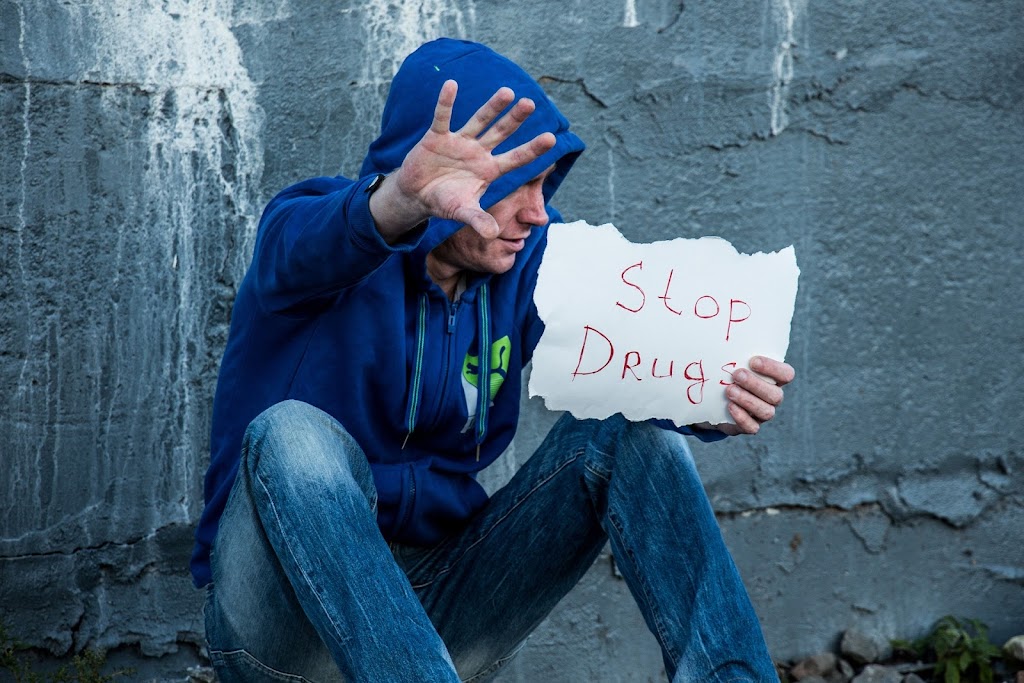In recent years, the opioid crisis has dominated headlines, affecting millions of lives around the world. Among the deadliest substances contributing to this crisis is fentanyl, a synthetic opioid that has surpassed heroin and prescription opioids as the leading cause of overdose deaths. This blog will shed light on the dangers of fentanyl drug abuse, providing complete information to help you understand the risks and protect yourself and your loved ones.
Understanding Fentanyl
Understanding fentanyl involves gaining knowledge about its nature, uses, risks, and impact on individuals and communities. Fentanyl is a synthetic opioid that is incredibly potent and poses significant dangers. Here are some key aspects to understand about fentanyl:
Nature:
Fentanyl is a synthetic opioid that is chemically similar to natural opioids such as morphine and heroin. It is manufactured in laboratories, primarily for medical purposes, including pain management and anesthesia.
Potency:
Fentanyl is exceptionally potent, with a potency ranging from 50 to 100 times stronger than morphine. Even tiny amounts can induce strong effects, making it extremely dangerous, especially when used without medical supervision.
Medical Use:
Fentanyl is used in medical settings to manage severe pain, particularly for patients who have developed tolerance to other opioids. It is available in various forms, including patches, lozenges, injections, and nasal sprays.
Illicit Production:
Illegally produced fentanyl has become a significant concern, as it is often manufactured in clandestine labs and mixed with other substances like heroin, cocaine, or counterfeit prescription pills. This mixing can lead to unintentional overdoses.
Risks of Abuse:
Fentanyl abuse carries significant risks due to its high potency. Individuals seeking euphoria or pain relief may misuse the drug, leading to addiction and overdose. Its potency also poses risks for accidental exposure, particularly among first responders and law enforcement.
Overdose Epidemic:
Fentanyl has played a major role in the opioid epidemic, contributing to a sharp increase in overdose deaths worldwide. Illicitly manufactured fentanyl has resulted in a rise in fatal overdoses, as users may unknowingly consume it, believing they are taking other substances.
Signs of Abuse:
Recognizing fentanyl abuse can be challenging, as its effects can mimic those of other opioids. Common signs include constricted pupils, drowsiness, slowed breathing, confusion, and nausea. If someone shows these signs, it is crucial to seek immediate help.
Harm Reduction and Prevention:
Preventing fentanyl abuse involves education, raising awareness, and implementing harm reduction strategies. These may include providing access to naloxone, training individuals on its use, promoting safer drug use practices, and offering addiction treatment and support services.
Understanding fentanyl is crucial for combating its devastating impact on individuals and communities. By increasing awareness, implementing prevention measures, and providing support, we can work towards reducing the harm caused by fentanyl abuse.
Dangers and Risks Of Fentanyl
The dangers and risks associated with fentanyl are significant and can have severe consequences for individuals who misuse or are exposed to this potent synthetic opioid. Here are some key dangers and risks of fentanyl:
Overdose:
Fentanyl is highly potent, making it extremely dangerous even in small doses. It depresses the respiratory system, leading to slowed or suppressed breathing. This can quickly result in an overdose, which can be life-threatening or fatal. The risk of overdose is heightened when fentanyl is mixed with other substances, such as heroin or cocaine, without the user’s knowledge.
Addiction:
Fentanyl abuse can rapidly lead to addiction due to its potency and the intense euphoric effects it produces. Individuals may become physically and psychologically dependent on the drug, making it challenging to stop using it without professional help. Fentanyl addiction can have a significant impact on all aspects of a person’s life, including their relationships, work or school performance, and overall well-being.
Lethal Effects:
Even minimal exposure to fentanyl can have lethal consequences. Accidental contact with fentanyl powder, through skin contact or inhalation, can result in overdose or even death. This poses a substantial risk to first responders, law enforcement personnel, and other individuals who may come into contact with the drug during emergency situations or drug seizures.
Illicit Manufacturing and Uncertain Purity:
Illegally manufactured fentanyl is often produced in unregulated laboratories or mixed with other substances. This lack of regulation means that the purity and strength of illicit fentanyl products can vary greatly, making it difficult for users to determine the appropriate dosage. Inconsistent potency increases the risk of accidental overdose and contributes to the unpredictability of its effects.
Public Health Crisis:
Fentanyl plays a significant role in the ongoing opioid crisis and has been a major contributor to the rising number of overdose deaths. Its presence in illicit drug markets has led to a surge in fatal overdoses, impacting communities worldwide. The opioid epidemic, fueled in part by fentanyl, has put a strain on healthcare systems, law enforcement, and social support services.
Risk of Polydrug Use:
Fentanyl is often mixed with other drugs, such as heroin or cocaine, to increase their potency or stretch the supply. Users who are unaware that these substances contain fentanyl are at a heightened risk of overdose. The combination of different drugs increases the complexity of treatment and poses additional health risks.
Understanding the dangers and risks of fentanyl is crucial to preventing overdose deaths and addressing the ongoing opioid crisis. Education, harm reduction strategies, access to addiction treatment and support services, and naloxone distribution are essential components of combating the risks associated with fentanyl abuse.
Recognizing Fentanyl Abuse
Recognizing fentanyl abuse can be challenging, as the drug is often disguised or mixed with other substances. However, there are certain signs and symptoms that can help identify potential fentanyl abuse. Here are some key indicators to recognize fentanyl abuse:
Physical Signs:
Constricted pupils: Fentanyl use can cause the pupils of the eyes to become noticeably smaller.
Drowsiness or sedation: Individuals abusing fentanyl may appear excessively sleepy, drowsy, or lethargic.
Slowed breathing: Fentanyl depresses the respiratory system, leading to shallow or slow breathing patterns.
Nodding off or loss of consciousness: Fentanyl can cause individuals to appear dazed, nodding off, or experiencing sudden episodes of loss of consciousness.
Behavioral and Psychological Signs:
Euphoria and intense pleasure: Fentanyl abuse can induce a strong sense of euphoria, which may be followed by periods of sedation.
Sudden mood swings: Individuals may display erratic or unpredictable mood swings, ranging from extreme happiness to irritability or agitation.
Withdrawal from social activities: People abusing fentanyl may isolate themselves from friends, family, or social events they previously enjoyed.
Neglecting responsibilities: Fentanyl abuse can lead to a decline in performance at work, school, or other responsibilities, as the drug takes precedence over daily obligations.
Drug Paraphernalia:
Presence of needles or syringes: Fentanyl is often injected, so the presence of used or unused needles may indicate drug abuse.
Burnt foil or straws: Some individuals may heat fentanyl on foil and inhale the vapors, leaving behind burnt foil or straws used for inhalation.
Small baggies or containers: Residue or small baggies containing white powder, which could potentially be fentanyl, may be found among personal belongings.
Overdose Symptoms:
Unresponsiveness or unconsciousness: Fentanyl overdose can lead to a loss of consciousness or an inability to wake the individual.
Bluish lips or fingertips: A lack of oxygen caused by fentanyl overdose can result in a bluish tint to the lips or fingertips.
Erratic breathing or no breathing at all: Breathing difficulties or complete cessation of breathing are common signs of fentanyl overdose.
It is essential to remember that these signs and symptoms are not definitive proof of fentanyl abuse but can serve as warning signs. If you suspect someone is abusing fentanyl or any other substances, it is crucial to encourage them to seek professional help and support.
Fentanyl Abuse Prevention and Treatment
Fentanyl abuse prevention and treatment involve a comprehensive approach that includes education, harm reduction strategies, and accessing professional assistance. Here are some key aspects of fentanyl abuse prevention and treatment:
Prevention:
Education and Awareness:
Raising awareness about the dangers of fentanyl abuse is crucial. Educational campaigns can target schools, communities, healthcare providers, and the general public to increase knowledge about the risks associated with fentanyl use.
Prescription Guidelines:
Ensuring that healthcare professionals follow strict prescribing guidelines for opioids, including fentanyl, can help prevent unnecessary exposure and reduce the likelihood of misuse.
Safe Storage and Disposal:
Proper storage and disposal of prescription medications can help prevent unauthorized access to fentanyl. Keeping medications secure and disposing of unused or expired medications through designated drug take-back programs can reduce the availability of fentanyl for misuse.
Harm Reduction Strategies:
Implementing harm reduction practices can help mitigate the risks associated with fentanyl abuse. These strategies include:
Access to Naloxone: Naloxone is an opioid overdose-reversing medication. Making naloxone readily available to individuals at risk of fentanyl overdose, as well as to their friends, family members, and community members, can save lives in emergency situations.
Testing Kits: Providing access to fentanyl testing kits can help individuals determine the presence of fentanyl in substances they intend to consume. This allows users to make informed decisions and take appropriate precautions to reduce the risk of overdose.
Safer Drug Use Practices: Promoting harm reduction techniques, such as using clean needles, avoiding sharing drug paraphernalia, and practicing safer injection techniques, can minimize the risk of infections and complications associated with fentanyl abuse.
Treatment:
Medical Detoxification:
Medically supervised detoxification is often the first step in treating fentanyl addiction. This process involves the gradual reduction of fentanyl use under medical supervision to manage withdrawal symptoms and ensure safety.
Medication-Assisted Treatment (MAT):
MAT involves the use of medications such as buprenorphine or methadone, along with counseling and behavioral therapies, to support recovery from fentanyl addiction. These medications help reduce cravings and withdrawal symptoms, improving the chances of successful recovery.
Behavioral Therapies:
Various behavioral therapies, such as cognitive-behavioral therapy (CBT) and contingency management, are effective in addressing the psychological aspects of fentanyl addiction. These therapies help individuals develop coping mechanisms, identify triggers, and modify problematic behaviors.
Support Groups and Aftercare:
Participating in support groups, such as Narcotics Anonymous (NA) or other recovery communities, can provide ongoing support and guidance throughout the recovery process. Aftercare programs, including counseling and relapse prevention strategies, help individuals maintain sobriety and navigate life after treatment.
Fentanyl abuse prevention and treatment require a multi-faceted approach that involves community involvement, healthcare professionals, and comprehensive support systems. By combining prevention strategies and evidence-based treatment modalities, individuals struggling with fentanyl abuse can have a better chance of achieving long-term recovery and minimizing the associated risks.
Conclusion
Fentanyl drug abuse poses a severe threat to public health, claiming countless lives and devastating families. By understanding its dangers, recognizing the signs, and taking preventive measures, we can work together to combat this crisis. It’s crucial to stay informed, spread awareness, and seek help for ourselves and those struggling with addiction. Together, we can make a difference and save lives.







